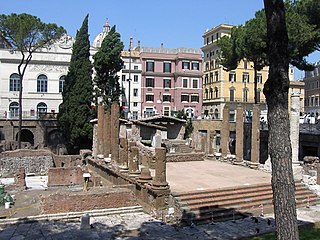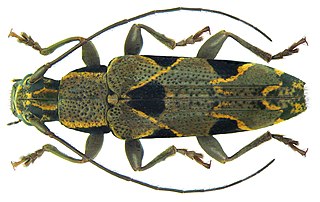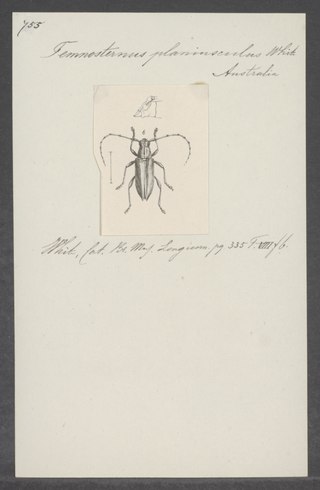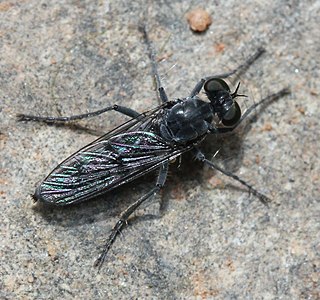Quintus Lutatius Catulus was a consul of the Roman Republic in 102 BC. His consular colleague was Gaius Marius. During their consulship the Cimbri and Teutones marched south again and threatened the Republic. While Marius marched against the Teutones in Gaul, Catulus had to keep the Cimbri from invading Italy. In this he failed; the Cimbri succeeded in invading the Po Valley. In 101 BC Catulus, as proconsul, continued the war against the Cimbri. Marius, elected consul for the fifth time, joined him and together they campaigned against the Germanic invaders in the Po Valley. At the Battle of Vercellae Marius and Catulus decisively defeated the Cimbri and ended the Germanic invasion. After Vercellae the two feuded, and Catulus consequently committed suicide following Marius's victory in the civil war of 87 BC.
The Battle of the Aegates was a naval battle fought on 10 March 241 BC between the fleets of Carthage and Rome during the First Punic War. It took place among the Aegates Islands, off the western coast of the island of Sicily. The Carthaginians were commanded by Hanno, and the Romans were under the overall authority of Gaius Lutatius Catulus, but Quintus Valerius Falto commanded during the battle. It was the final and deciding battle of the 23-year-long First Punic War.

Gaius Lutatius Catulus was a Roman statesman and naval commander in the First Punic War. He was born a member of the plebeian gens Lutatius. His cognomen "Catulus" means "puppy". There are no historical records of his life prior to consulship, but his career probably followed the standard cursus honorum, beginning with service in the cavalry and continuing with the positions of military tribune and quaestor.

The Battle of Vercellae, or Battle of the Raudine Plain, was fought on 30 July 101 BC on a plain near Vercellae in Gallia Cisalpina. A Germanic-Celtic confederation under the command of the Cimbric king Boiorix was defeated by a Roman army under the joint command of the consul Gaius Marius and the proconsul Quintus Lutatius Catulus. The battle marked the end of the Germanic threat to the Roman Republic.
Marcus Aemilius Lepidus was a Roman statesman and general. After the death of Lucius Cornelius Sulla, he joined or instigated a rebellion against the Sullan regime, demanding a consecutive term as consul late in his year and, when refused, marching on Rome. Lepidus' forces were defeated in a battle near the Milvian Bridge and he fled to Sardinia. He was the father of the triumvir Lepidus and of the Lucius Aemilius Lepidus Paullus who was consul in 50 BC.

The gens Lutatia, occasionally written Luctatia, was a plebeian family of ancient Rome. The first of the gens to obtain the consulship was Gaius Lutatius Catulus in 242 BC, the final year of the First Punic War. Orosius mentions their burial place, the sepulchrum Lutatiorum, which lay beyond the Tiber.
The Treaty of Lutatius was the agreement between Carthage and Rome of 241 BC, that ended the First Punic War after 23 years of conflict. Most of the fighting during the war took place on, or in the waters around, the island of Sicily and in 241 BC a Carthaginian fleet was defeated by a Roman fleet commanded by Gaius Lutatius Catulus while attempting to lift the blockade of its last, beleaguered, strongholds there. Accepting defeat, the Carthaginian Senate ordered their army commander on Sicily, Hamilcar Barca, to negotiate a peace treaty with the Romans, on whatever terms he could negotiate. Hamilcar refused, claiming the surrender was unnecessary, and the negotiation of the peace terms was left to Gisco, the commander of Lilybaeum, as the next most senior Carthaginian on the island. A draft treaty was rapidly agreed upon, but when it was referred to Rome for ratification it was rejected.
Quintus Lutatius Catulus Capitolinus was a politician in the late Roman Republic. His father was the like-named Quintus Lutatius Catulus, consul in 102 BC. He gained the agnomen "Capitolinus" for his defense of the capital in 77 BC against Lepidus.
Marcus Junius Brutus was a plebeian tribune of the Roman Republic in 83 BC and the founder of the colony in Capua. He was an associate of Marcus Aemilius Lepidus, who led a revolt against the senate after the death of Sulla. He was captured by Pompey and treacherously executed. He was the father of a homonymous son, who assassinated Julius Caesar in 44.

Elysia catulus is a small species of sea slug, a marine gastropod mollusc in the family Plakobranchidae. This sea slug resembles a nudibranch, but it is not closely related to that order of gastropods, instead it is a sacoglossan. The specific name "catulus" comes from the Greek and means "little cat", referring to the superficial resemblance that the head of this slug bears to the head of a cat.
Elysia serca, the seagrass elysia or Caribbean seagrass elysia, is a species of sea slug, a marine gastropod mollusc in the family Plakobranchidae. Although this sea slug resembles a nudibranch, it is not a nudibranch; it belongs to the clade, Sacoglossa, the "sap-sucking" sea slugs. It was first described by Marcus in 1955 from specimens found in Brazil.

Tmesisternini is a tribe of beetles in the subfamily Lamiinae containing the following genera:

Temnosternus is a genus of longhorn beetles of the subfamily Lamiinae.
Quintus Valerius Falto was a Roman general and statesman during the middle era of the Roman Republic. He fought in the final phase of the ongoing First Punic War; he led the Roman fleet to victory during the Battle of the Aegates, for which he was awarded a minor Triumph. Quintus was elected consul in 239 BC alongside Gaius Mamilius Turrinus. He was the brother of his successor, the consul Publius Valerius Falto who served in 238 BC.
Temnosternus quadrituberculatus is a species of beetle in the family Cerambycidae. It was described by McKeown in 1942. It is known from Australia.
Temnosternus apicalis is a species of beetle in the family Cerambycidae. It was described by Francis Polkinghorne Pascoe in 1878. It is known from Australia.
Temnosternus flavolineatus is a species of beetle in the family Cerambycidae. It was described by Stephan von Breuning in 1939. It is known from Australia.
Temnosternus vitulus is a species of beetle in the family Cerambycidae. It was described by Francis Polkinghorne Pascoe in 1871. It is known from Australia.

Stichopogon catulus is a species of robber fly in the family Asilidae.
Gaius Lutatius Catulus was a Roman statesman and naval commander in the First Punic War.




